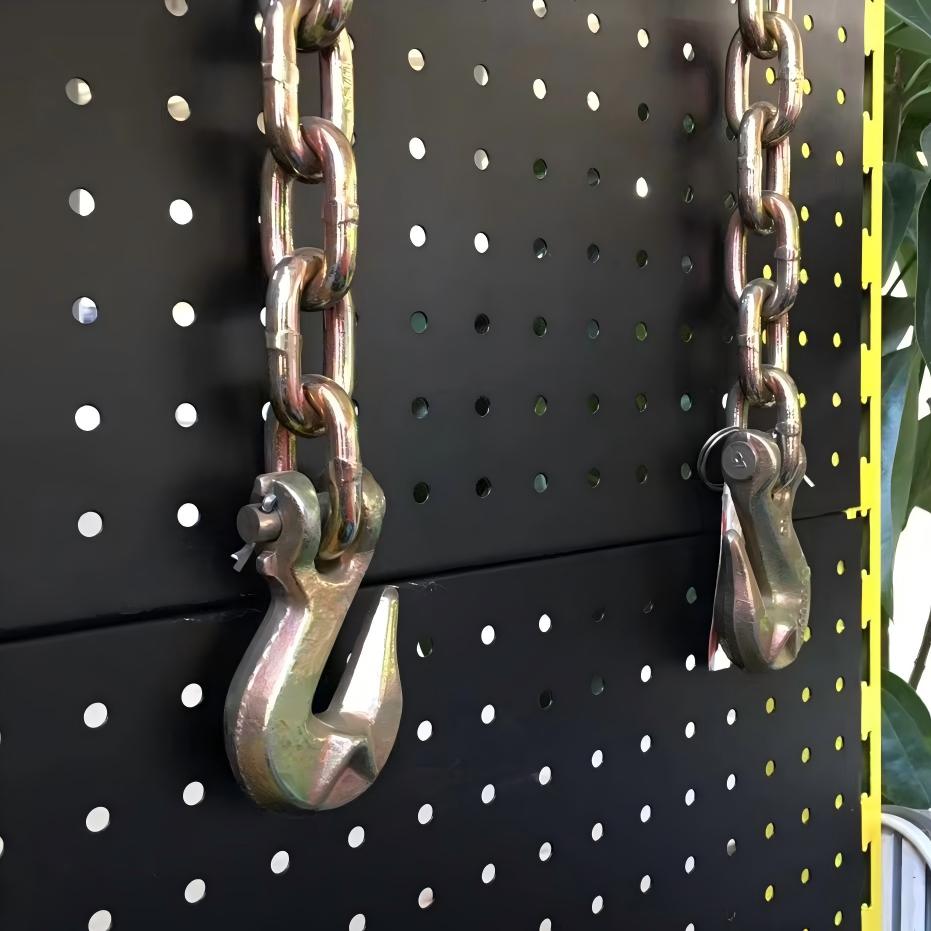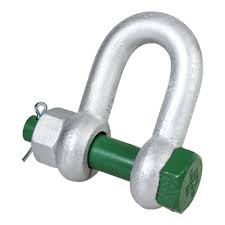Our staff will contact you within 12 hours, You can also contact us through the following ways:
Contact US WhatsApp: +8618766656705
- Email: [email protected]
- Tel: +8618766656705
- Web: https://www.toponechain.com/
In modern construction, mining, logistics, and heavy manufacturing, rigging equipment must deliver strength, reliability, and safety. Components such as lifting chains with hooks, lifting D shackles, lifting sling chains, and lifting sling hooks are indispensable in creating safe and versatile lifting assemblies. Choosing the right combination not only improves efficiency but also ensures compliance with international lifting standards.
Lifting chains with hooks are manufactured from high-grade alloy steel (commonly Grade 80 or Grade 100) and designed to withstand repeated heavy-duty operations.
Key highlights:
Configurations: Available in single-leg, double-leg, three-leg, and four-leg chain slings.
Hook Options: Can be fitted with clevis hooks, grab hooks, or self-locking hooks depending on lifting needs.
Applications: Commonly used to move steel plates, prefabricated components, engines, and heavy cargo.
Durability: Resistant to abrasion, impact, and high working temperatures up to 200°C.
With their flexibility, lifting chains with hooks are the most widely used rigging tools across industries.

A lifting D shackle is a compact but powerful component that connects lifting chains to master links, hooks, or other rigging gear.
Advantages:
Simple Connection: The D shape provides a stable load-bearing path.
Secure Pin System: Available with screw pins, bolt-and-nut with cotter pins, or safety pins.
Material Strength: Forged alloy steel or stainless steel, ensuring high WLL and corrosion resistance.
Industry Use: Frequently applied in shipbuilding, offshore rigs, and general construction for both temporary and permanent connections.
The lifting D shackle is especially valuable where vibration or heavy loads could loosen a standard connection, making it a trusted link in chain sling assemblies.

A lifting sling chain is a complete lifting solution that integrates chains, master links, connectors, and hooks. Unlike wire rope or synthetic slings, chain slings offer:
High Working Load Limits (WLL) for overhead lifting.
Excellent Resistance to cutting, abrasion, and extreme weather.
Flexible Use with different hook styles and shackle attachments.
Service Longevity thanks to heat-treated alloy construction.
They are ideal for applications where durability and safety must be guaranteed, such as in steel fabrication, heavy logistics, and mining.
Lifting sling hooks are specially designed to secure loads and reduce the risk of accidents. Available in different forms:
Standard Sling Hook: A general-purpose hook with or without a safety latch.
Self-Locking Hook: Automatically locks when under load, preventing accidental disengagement.
Grab Hook: Used to shorten chain lengths or hold them in place.
Foundry Hook: Designed with a wide throat opening for bulky or irregular items.
Choosing the correct hook ensures both safety and operational efficiency. Hooks must be regularly inspected for wear, deformation, and latch integrity.
The combination of lifting chains with hooks, lifting D shackles, and lifting sling chains provides reliable lifting solutions for:
Construction: Hoisting beams, scaffolding, and precast concrete units.
Mining: Transporting drilling tools, conveyor sections, and ore containers.
Marine & Offshore: Handling anchors, cargo, and offshore structures exposed to saltwater.
Manufacturing: Moving machinery, molds, tanks, and assembly parts.
Transport & Logistics: Securing heavy loads for loading, unloading, and cargo restraint.
These applications demonstrate the adaptability of chain-based lifting gear across multiple industries.
Using lifting sling chains and accessories safely requires adherence to best practices:
Respect WLL: Never exceed the Working Load Limit shown on equipment tags.
Pre-Use Inspection: Check chains for elongation, shackles for pin wear, and hooks for cracks.
Correct Angles: Sling angles greater than 60° significantly reduce capacity.
Temperature Restrictions: Avoid use above 200°C for alloy steel chains.
Regular Certification: Ensure slings and shackles are tested and certified to CE, TÜV, or ISO standards.
Proper Storage: Keep equipment clean, dry, and free from chemicals to extend lifespan.
Component | Key Function | Material | Notable Advantage | Typical Use |
Lifting Chains with Hooks | Main lifting assembly | Alloy steel G80/G100 | Flexible, durable | Heavy-duty lifting |
Lifting D Shackle | Connector between gear | Forged steel | Secure, vibration-resistant | Rigging & marine |
Lifting Sling Chain | Complete sling system | Alloy chain | Long service life | Mining & industry |
Lifting Sling Hooks | Secure load attachment | Forged steel | Various hook styles | General rigging |
From lifting chains with hooks to lifting D shackles, every piece of lifting equipment plays a vital role in safe and efficient rigging. High-quality lifting sling chains and certified lifting sling hooks ensure compliance with global standards, reduce risks, and provide reliable performance in the harshest environments.